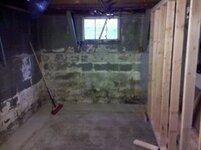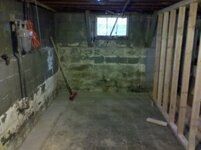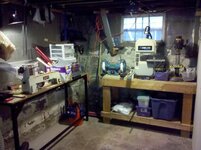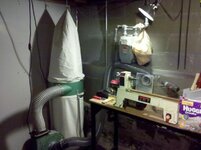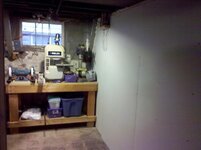truckerdave
Member
I am starting on my first ever real work shop. I have been offered room in the basement. an area that is 10'X11' with 7' ceilings, it is almost a square area.
The floor is of course concrete and the ceiling is open rafters. My only limitation is that I have to build 2 walls and frame out for a door in order to contain any dust that might escape whatever dust collection system that I end up acquiring.
Speaking of dust collection/air filtration, as this is a relatively small area, about 750 cubic feet, if my math is correct, what system will give me good results for the money? This shop will be used primarily for hobby woodturning as I have very little desire to do flatwork anymore. I wont be doing this full time, just a hobby.
I will need lighting and multiple electrical outlets installed to make this a workable shop. Any suggestions on where to place them and types I may need?
I have a Jet mini-lathe with the very real possibilty of acquiring a much larger one in the future, my 8" bench grinder, a table top bandsaw (hoping to upgrade to a much bigger one soon also), tabletop drill press, 12" compound mitre saw, and plenty of workbenches and shelving for working and storage. Any suggestions/drawings/pics of how I should arrange these items for the most logical and ease of use?
Additionally the outside walls are the basement foundation, should I insulate these walls (yes they are dry.) Should I also insulate the ceiling somehow as my Better Half works from home and I am a little concerned about the extra noise.
I really appreciate any advice (and pics/drawings) from those of you that may have completed this type of job. Are there any concerns or potential costly mistakes that you may have experienced that you can help me to avoid?
Thanks in advance for all your help!!!
The floor is of course concrete and the ceiling is open rafters. My only limitation is that I have to build 2 walls and frame out for a door in order to contain any dust that might escape whatever dust collection system that I end up acquiring.
Speaking of dust collection/air filtration, as this is a relatively small area, about 750 cubic feet, if my math is correct, what system will give me good results for the money? This shop will be used primarily for hobby woodturning as I have very little desire to do flatwork anymore. I wont be doing this full time, just a hobby.
I will need lighting and multiple electrical outlets installed to make this a workable shop. Any suggestions on where to place them and types I may need?
I have a Jet mini-lathe with the very real possibilty of acquiring a much larger one in the future, my 8" bench grinder, a table top bandsaw (hoping to upgrade to a much bigger one soon also), tabletop drill press, 12" compound mitre saw, and plenty of workbenches and shelving for working and storage. Any suggestions/drawings/pics of how I should arrange these items for the most logical and ease of use?
Additionally the outside walls are the basement foundation, should I insulate these walls (yes they are dry.) Should I also insulate the ceiling somehow as my Better Half works from home and I am a little concerned about the extra noise.
I really appreciate any advice (and pics/drawings) from those of you that may have completed this type of job. Are there any concerns or potential costly mistakes that you may have experienced that you can help me to avoid?
Thanks in advance for all your help!!!

